As software engineers in fast-paced projects we risk getting overwhelmed by huge workloads and deadlines. Usually, the work is fun and that is why we can cope with it over longer periods, but we need moments to breath and think about other things. I do not want to talk about general work-life balance here. I want to talk about the work-portion here. We need to make breaks or follow a slight activity (like take a short walk in the nearest park). Another thing we experienced to be refreshing are retrospectives! Obviously their objective is to improve processes to increase efficiency and discover impediments (check the SCRUM GUIDE, p. 14), but they are also fun during times with high workloads. Therefore, if you feel like skipping them to have more time that is “productive” – resist.
Shout out
Following are some ideas on how to make your team’s retrospective a bit more exciting. Be careful that they fit your team. Do not force your colleagues to do what they do not want, especially as the following ideas might be a bit too cheesy.
A shout out to various sites in the web where we took ideas and inspiration
In addition, an extra shout out to my colleague Harald Wittmann for coming up with some great ideas.
Without further ado, here are ideas for retrospectives to inspire your team.
Visual and playful
Super hero
Everybody likes superheroes, so do we. It does not matter if you are a fan of the MCU, DC or if you feel indifferent about Superman, Thor & friends; in this retrospective, the hero is just a vessel. They help the team to jump out of character and enable you to see your processes from a different angle.
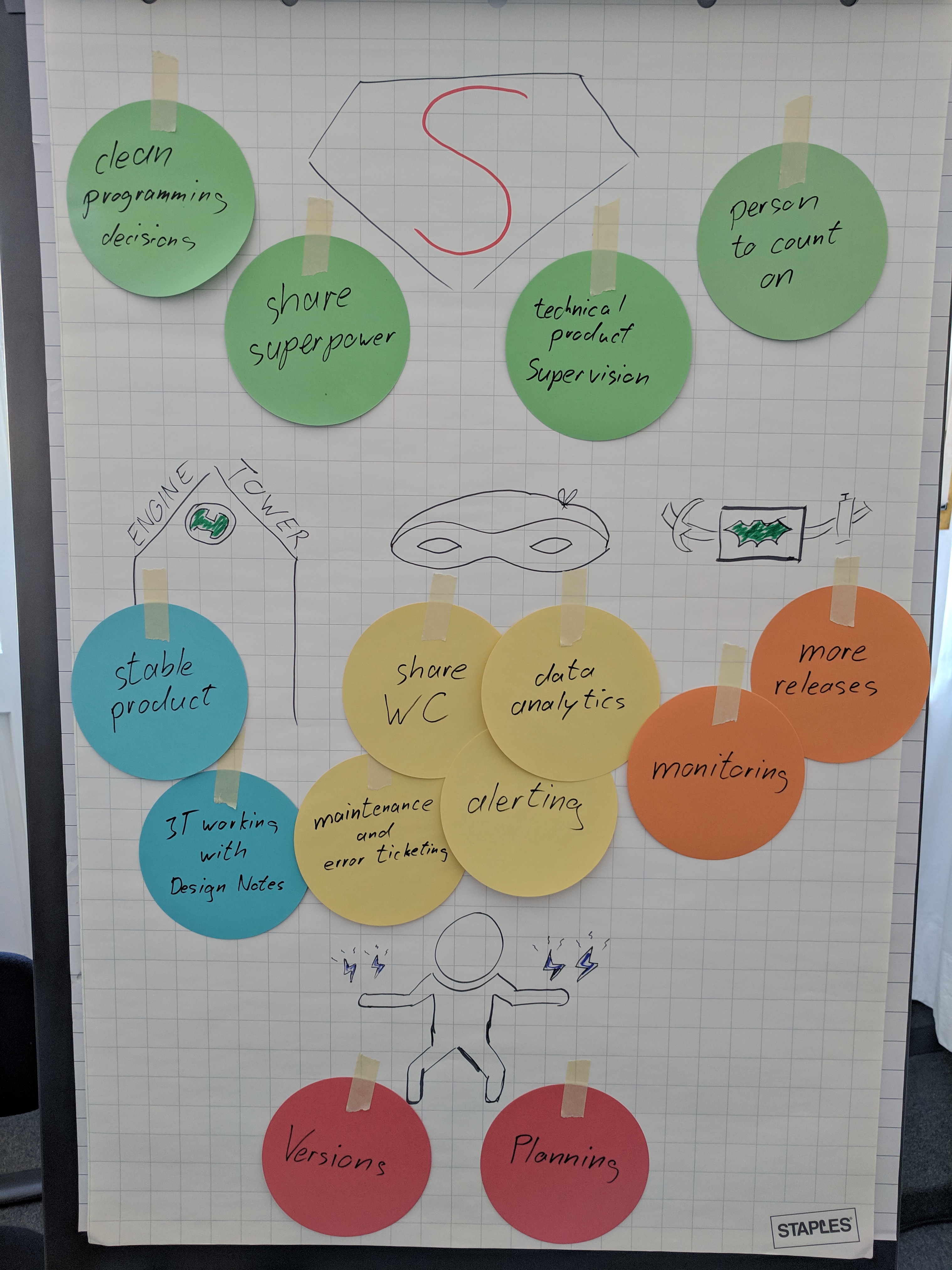
Superhero retreat: Visualize your main base here. In our case, it is called "the engine tower", because there is "engine" in our project name. In your case, this should represent your project. It is the place where you feel comfortable, a safe space. Here you should collect what you did great, what your strength are and what you can rely on.
Sidekick: Every hero has someone to help him in dangerous times. In the retrospective, this is where you can call for help: write down where you need support. An example could be, "we need more time for research on a topic before we start implementing".
Gadgets: Image a belt with all your tools for converting ideas into software. What tools/skills can you improve or add to your belt?
Villain: This one is easy – what are obstacles in your way to achieve your objectives? Write down what could interrupt and/or destroy your goals.
The three little pigs
Play your team through the fable of the three little pigs. This is visual and just a tiny bit childish. This enables you to jump out of role (again). A piglet in a fairy tale can say completely different things than a senior software engineer. In addition, this retrospective is understandable easily.

The three huts (straw/sticks/brick) visualize things that can slip/rip easy, things that work, but can be improved and things that the team can rely on. Finally, we have the Big Bad Wolf. Like the villain previously, he resembles risks, obstacles and impediments.
The boat
As you might realize by now, we are a visual team. For us, the biggest benefit is that you view things from a different point and say things you would not have thought of or talked about.

The island is your goal. It is the ultimate objective. Be careful, we are talking process goals not software features or releases.
The wind is what gets you there. Collect what makes you efficient and helps you to continue and focus your efforts.
In contrary, post things that delay you near the anchor. Bigger risks (i.e. not just slowing, but also stopping your work) would find their place near the rocks.
The box
The box follows the same approach as the previous ideas, but in a more basic and easy understandable way. Draw a box. It shows your current environment/toolbox. Collect what is in there (keep/recycle), what should be in the box, but is not yet and what you want to kick out.

If you want to, you could try this retro with a physical box.
The traditional
While the visual ideas are great, they require some set up and preparation. That is why we mix in more traditional retrospectives, too.
Liked learned lacked
Like the following ones, this follows the typical retrospective pattern, where you collect what was good, bad and what can be improved.
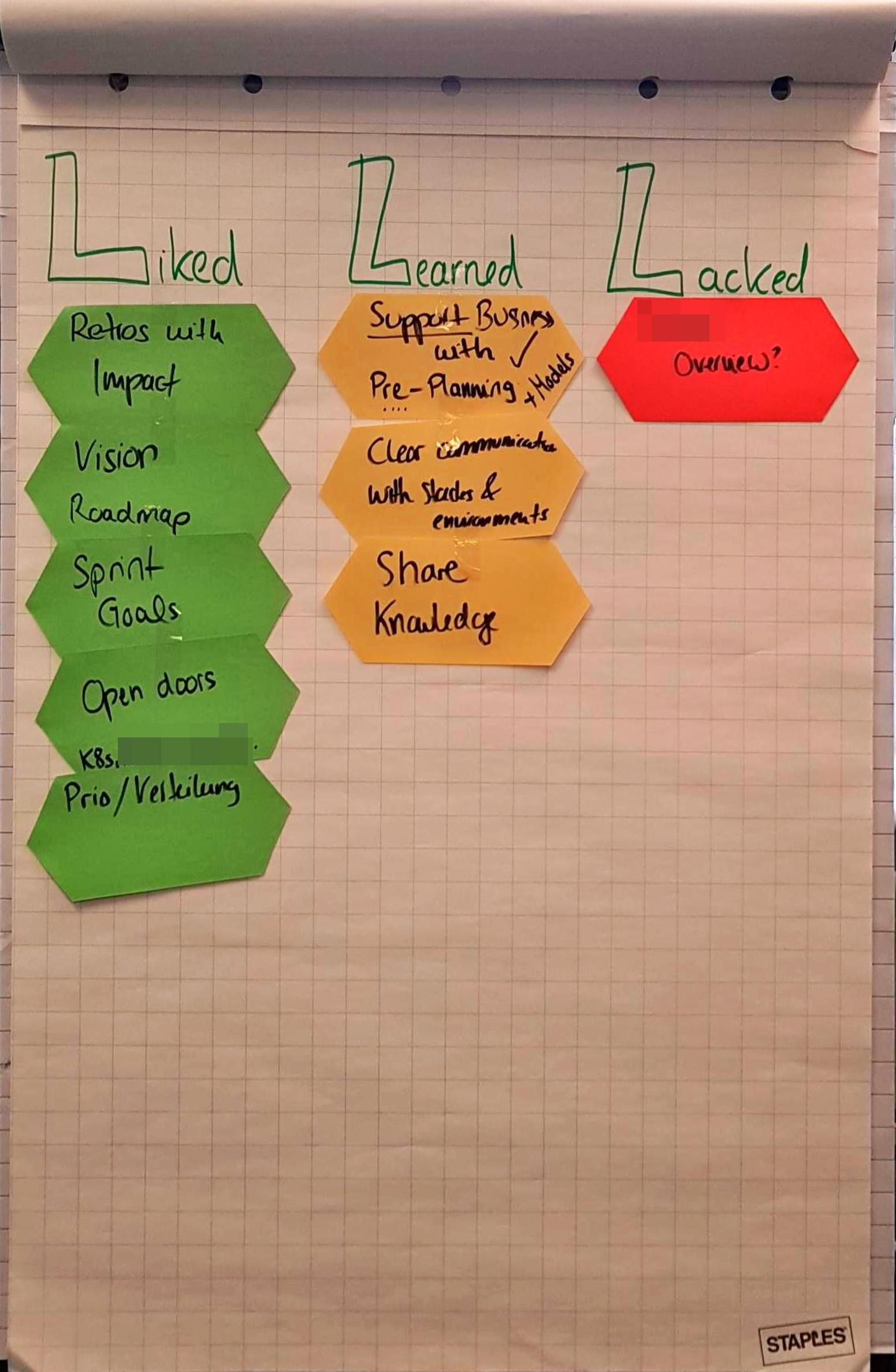
Liked: What went well, what was new that improved your process?
Learned: When some was harder than expected or took longer than estimated, try to derive what you learned from that to not repeat the mistake.
Lacked: What are things that slowed your progress? What are things you want to get better in? An example could be "degree of automation (around product tooling)".
Sad mad glad
The same approach as the liked – learned – lacked.
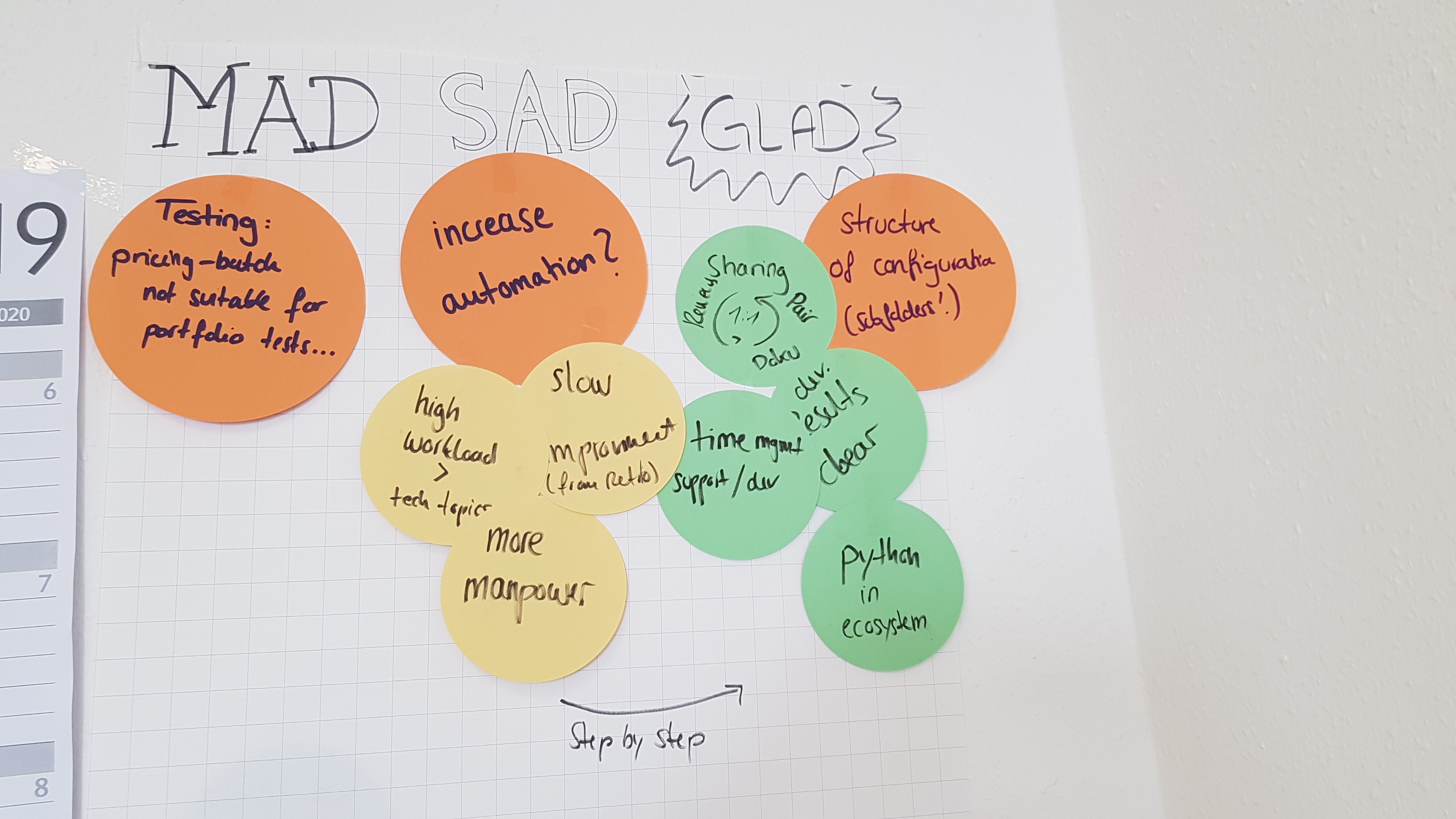
What made you sad last sprint (what kept your efforts below expectations) or even mad (things that made parts of the sprint fail). Do not forget to collect what went good (glad).
Start Stop Continue
A mix of the simpler retrospectives and "the box". Sadly, it does not rhyme like the other ones.
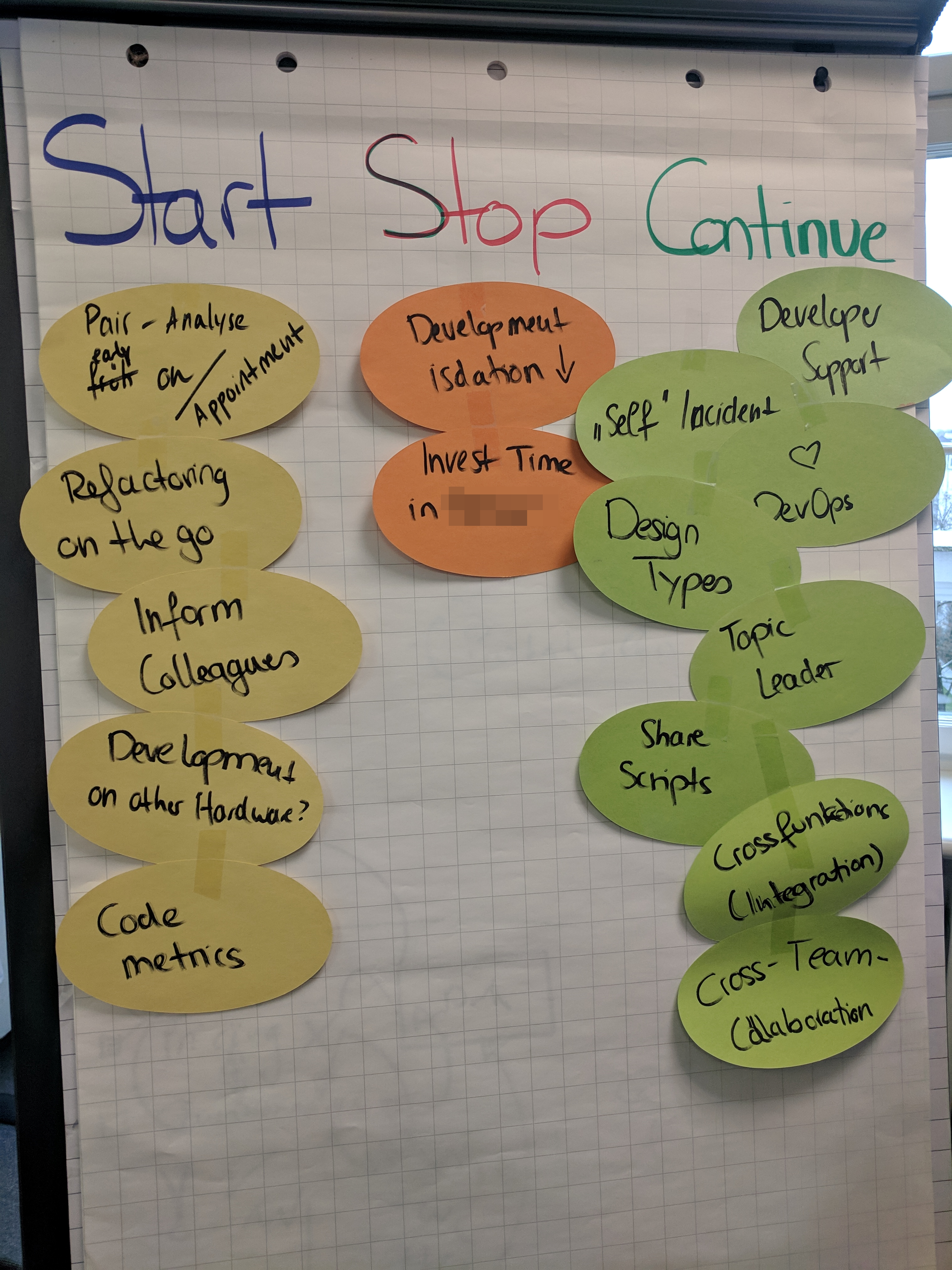
Start: Things you could improve, e.g. plan in more time for the presentation of concepts/mock ups to validate them with the business colleagues.
Stop: Things you should stop in the next sprint, e.g. let requests grow too big.
Continue: Things that went well and you should not forget about, e.g. pick a topic and discuss it in a two-man session while you walk through the nearby park.
I Wish / I Like / If everything was possible
This focusses on “I wish” (what could have been better, what is the team/process lacking) and “I like” (what did we do well, what learnings occurred during the sprint) at first.
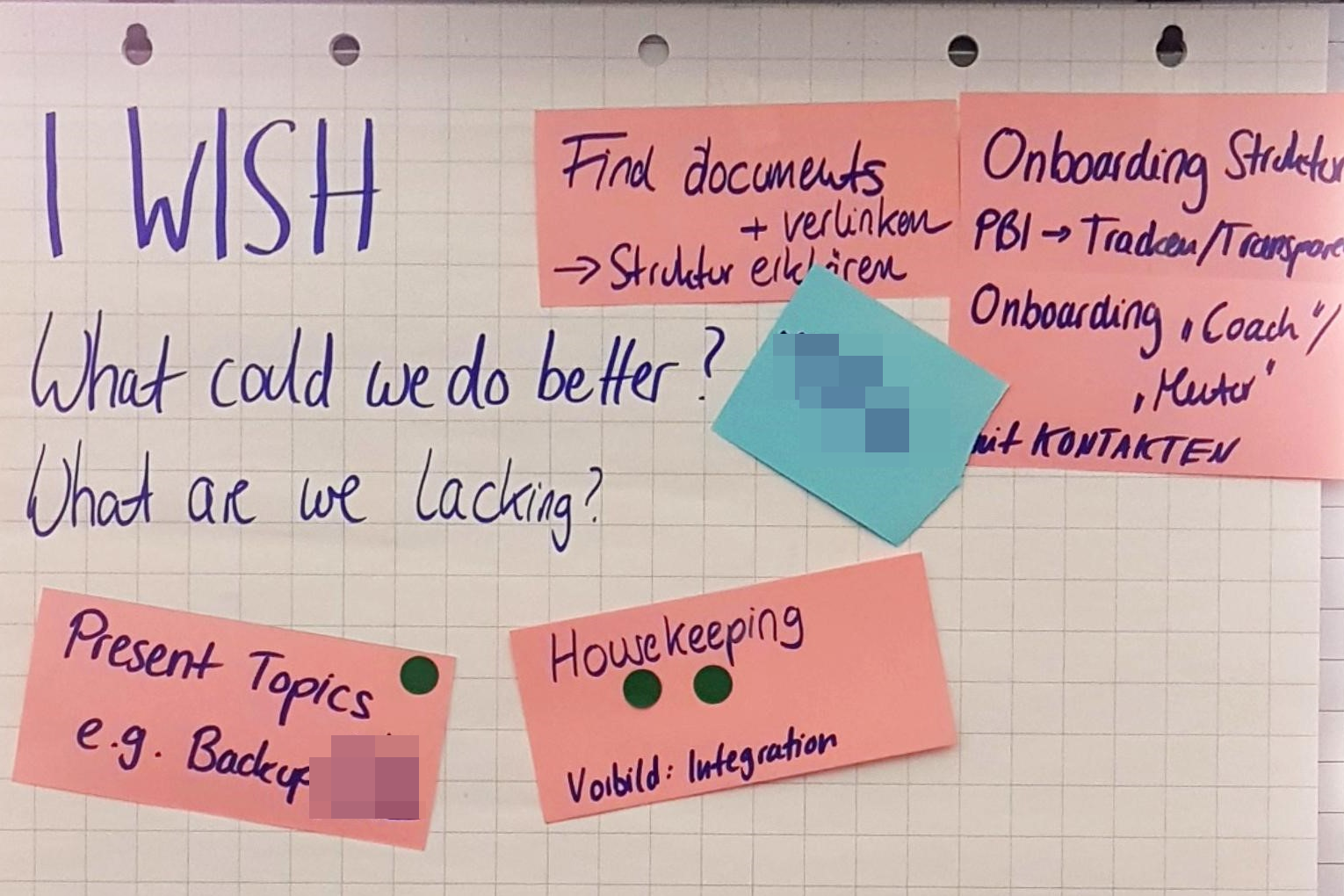
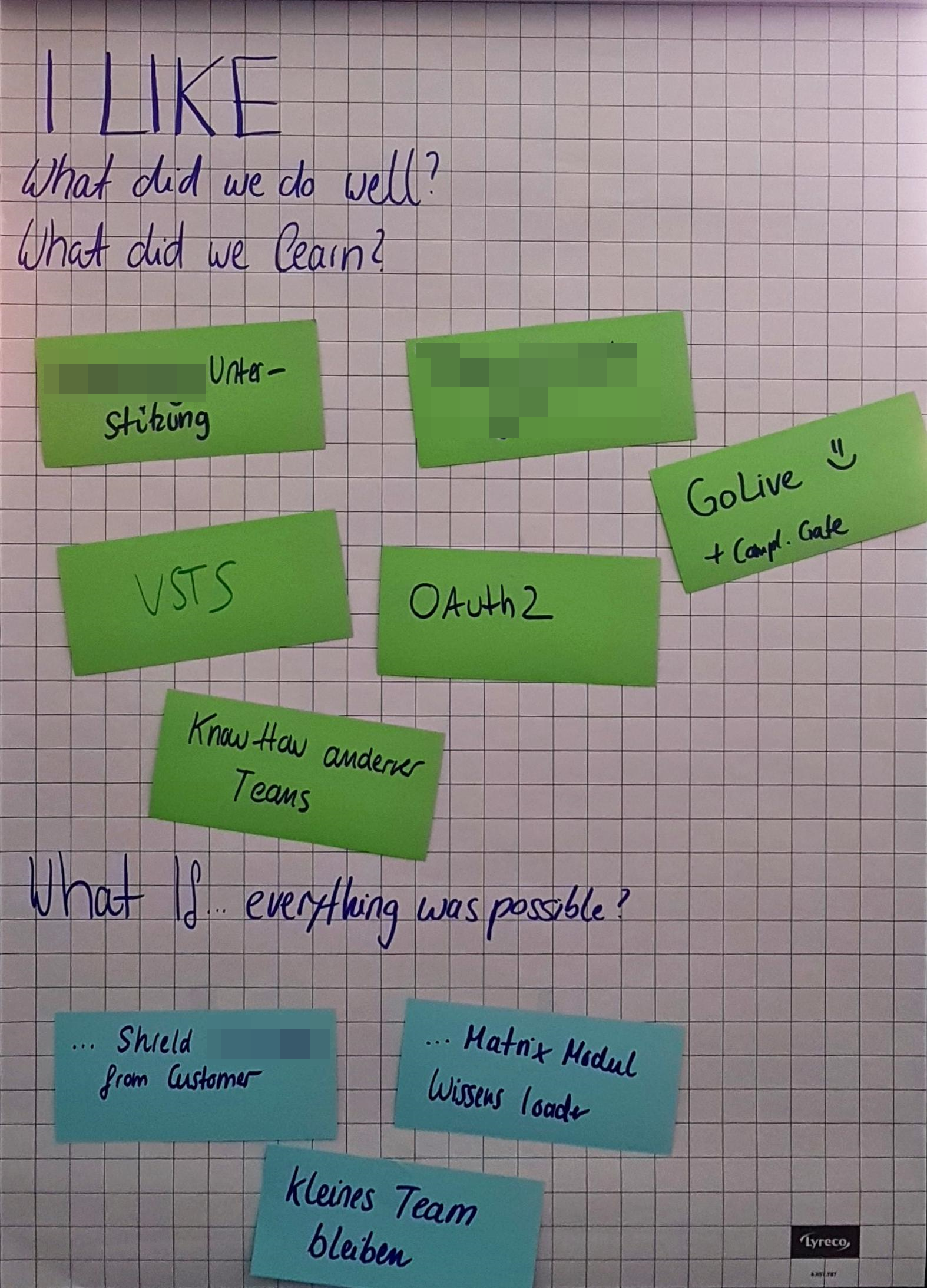
Then we want to get an element we had in previous ideas (e.g. what would be your superpower…): "if everything was possible…." This enables us to dream and speak openly. While these things are utopic, you can try to make a step in their direction. An example could be, "If everything was possible, I would only write clean code". This could show I had troubles with this in the past. Either I did not have enough time to refactor a section, lack knowledge about clean code or something along those lines. Now we can derive actions from; like look for a book or a training, make a session with typical code smells, estimate more time for refactoring, plan in more code reviews…
In the usual work environment, I would not just say, "Hey folks, I write dirty code" (well maybe…).
Other Ideas
I hope that you found some inspiration reading this. To top it off, here are two additional tips:
- Before the retrospective, go back to your backlog and write down what you achieved during the last sprint. Then at the start of the meeting, just listen the topics and challenges you overcome. This helps the team to think back and remember things they want to bring up in the retrospective. For us a moral boost helps with such a highly creative artifacts as a scrum retrospective.
- Try to visualize your team structure somehow. This could be a football field or the ship we saw previously. What position would everybody take? (Think about captain, on board scrubbing the deck…)
Do you have ideas for retrospectives? Leave a comment or send me an email!


 Camelia Boban
Camelia Boban
Dein Kommentar
An Diskussion beteiligen?Hinterlasse uns Deinen Kommentar!